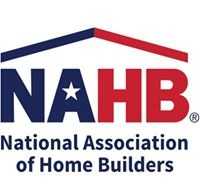WASHINGTON, D.C. – January 17, 2011 – (RealEstateRama) — Three National Association of Home Builders (NAHB) members, home builders and remodelers who are certifying their projects to the federal Department of Energy’s Builders Challenge program say that affordability, not cutting-edge technology, is key to their ability to seal the deal with home buyers.The builders spoke at press conference during the NAHB International Builders’ Show, which observed its fourth annual Green Day on Jan. 13. This press conference was held in conjunction with Builders’ Challenge, which offers technical assistance to builders and remodelers constructing homes to be at least 30 percent more efficient than the prevailing energy code requirements.
Builders interested in certifying their homes with Builders Challenge can do so while meeting the additional requirements of the National Green Building Standard. The scoring tool at www.nahbgreen.org offers a dual certification option for those builders and remodelers wishing to go beyond energy efficiency and incorporate water efficiency, indoor environmental quality and other hallmarks of the green built home.
That’s a great encouragement for program participants, who can use the dual certification tool to cut their administrative costs and save time, said Matt Belcher of Belcher Homes in St. Louis, which recently completed the first remodeling project to be certified by both the National Green Building Standard and the Builders Challenge program.
“If it’s too expensive, we can’t do it,” said G.W. Robinson of G.W. Robinson Builders, a custom home building company in Gainesville, Fla. His company has been building homes to be progressively more energy-efficient since the mid-1990s and now averages Home Energy Rating (HERS) scores of less than 60, meaning they are built to be at least 40 percent more energy efficient than homes built to the prevailing codes.
Since the Builders Challenge program was launched at the NAHB International Builders’ Show in February 2008, 5,000 homes have been certified. More than 1,000 of them have been built by David Weekly Homes, the majority of those in its East Texas division. “It gives us an edge in the market and it’s the right thing to do,” said Nate Beauregard, quality coach for David Weekly.
However, the company has had to find ways to cut costs in other facets of its operation to pay for the products, materials and quality control time needed to building more energy efficient homes, which together add about 3-5 percent to the costs of construction, he said. “The problem is that (home buyers in) a lot of markets aren’t willing to pay for them, so we are taking on the additional costs.”
Both Beauregard and Belcher said they focus on the building envelope, paying attention to how the home is sealed, rather than relying on high-tech products to get better HERS scores. “We haven’t see the cost benefit yet of solar power” and other renewable energy systems, Beauregard said.
As energy efficiency requirements in building codes become more stringent, Builders Challenge participants are ahead of the game, and that can put them at a competitive advantage, said David Lee, who heads up the program for the Department of Energy. In addition, “these builders are finding the way to see if these increases are achievable or not,” he said.
Source: NAHB







